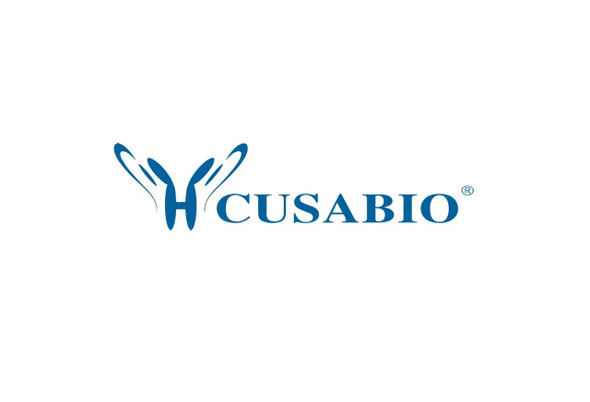Cusabio Active Proteins
Recombinant Mouse Cytotoxic T-lymphocyte protein 4 (Ctla4), partial (Active) | CSB-AP005301MO
- SKU:
- CSB-AP005301MO
- Availability:
- 5 to 10 Working Days
Description
Recombinant Mouse Cytotoxic T-lymphocyte protein 4 (Ctla4) ,partial (Active) | CSB-AP005301MO | Cusabio
Protein Description: Partial
Alternative Name (s) : Cytotoxic T-lymphocyte protein 4; Cytotoxic T-lymphocyte-associated antigen 4; CTLA-4; CD152; Ctla4
Gene Names: Ctla4
Research Areas: Immunology
Species: Mus musculus (Mouse)
Source: Mammalian cell
Tag Info: C-terminal 6xHis-tagged
Expression Region: 37-161aa
Sequence Info: AIQVTQPSVVLASSHGVASFPCEYSPSHNTDEVRVTVLRQTNDQMTEVCATTFTEKNTVGFLDYPFCSGTFNESRVNLTIQGLRAVDTGLYLCKVELMYPPPYFVGMGNGTQIYVIDPEPCPDSD
Biological Activity: The ED50 as determined by its ability to bind Mouse B7-1 in functional ELISA is less than 20 ng/ml.
MW: 14.6 kDa
Purity: Greater than 95% as determined by SDS-PAGE.
Endotoxin: Less than 1.0 EU/µg as determined by LAL method.
Relevance: Mouse Cytotoxic Tlymphocyte 4 (CTLA-4,CD152) , is a type I transmembrane T cell inhibitory molecule. mouse CTLA4 cDNA encodes 223 amino acids (aa) including a 35 aa signal sequence, a 126 aa extracellular domain (ECD) with one Ig-like V-type domain, a 21 aa transmembrane (TM) sequence, and a 41 aa cytoplasmic sequence. Within the ECD, Mouse CTLA-4 shares 68% aa sequence identity with human. CTLA4 is similar to the T cell costimulatory protein CD28 since both of the molecules bind to CD80 and CD86 on antigen-presenting cells. CTLA4 transmits an inhibitory signal to T cells, whereas CD28 transmits a stimulatory signal. Intracellular CTLA4 is also found inregulatory T cells and may play an important role in their functions. T cell activation through the T cell receptor and CD28 leads to increased expression of CTLA4. Genetic variations of CTLA4 have been associated with susceptibility to systemic lupus erythematosus (SLE) , Gravesdisease (GRD) , Celiac disease type3 (CELIAC3) and Hepatitis B virus infection (HBVinfection) .
PubMed ID:
Notes: Repeated freezing and thawing is not recommended. Store working aliquots at 4℃ for up to one week.
Function: Inhibitory receptor acting as a major negative regulator of T-cell responses. The affinity of CTLA4 for its natural B7 family ligands, CD80 and CD86, is considerably stronger than the affinity of their cognate stimulatory coreceptor CD28.
Involvement in disease:
Subcellular Location: Cell membrane, Single-pass type I membrane protein
Protein Families:
Tissue Specificity: Widely expressed with highest levels in lymphoid tissues.
Paythway:
Form: Lyophilized powder
Buffer: Lyophilized from a 0.2 μm filtered 1xPBS, pH 7.4
Reconstitution: We recommend that this vial be briefly centrifuged prior to opening to bring the contents to the bottom. Please reconstitute protein in deionized sterile water to a concentration of 0.1-1.0 mg/mL.We recommend to add 5-50% of glycerol (final concentration) and aliquot for long-term storage at -20℃/-80℃. Our default final concentration of glycerol is 50%. Customers could use it as reference.
Uniprot ID: P09793
Uniprot Entry Name:
HGNC Database Link: N/A
UniGene Database Link: UniGene
KEGG Database Link: KEGG
STRING Database Link: STRING
OMIM Database Link: N/A









